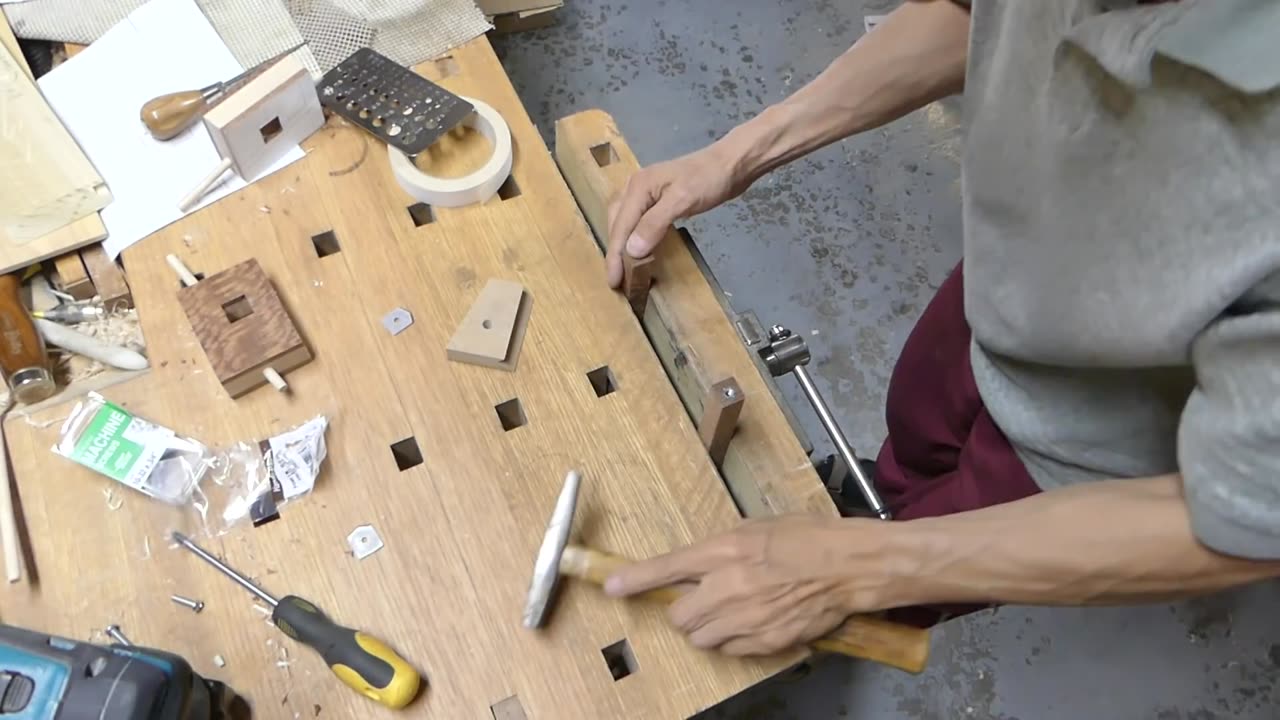Premium Only Content

make a marking gauge
Materials Needed:
Hardwood stock (such as maple or beech) for the body
Steel rod or screw for the marking point
Small brass or steel knob
Wood glue
Sandpaper
Finish (such as oil or wax)
Tools Needed:
Saw (hand saw or table saw)
Drill and bits
Chisel
Mallet
File
Screwdriver
Step-by-Step Guide:
Prepare the Stock:
Begin by cutting your hardwood stock to the desired length for the marking gauge body. A length of around 8 to 10 inches should be sufficient for most projects.
Shape the Body:
With the stock cut to length, shape it into a rectangular or oval shape, depending on your preference. You can use a saw and chisel to remove excess material and refine the shape.
Drill Holes:
Next, drill two holes near one end of the body: one for the marking point and one for the knob. The hole for the marking point should be drilled perpendicular to the face of the body, while the hole for the knob can be drilled at a slight angle to provide clearance.
Insert the Marking Point:
Insert the steel rod or screw into the hole drilled for the marking point, leaving a small amount protruding from the face of the body. Secure it in place with wood glue, and allow it to dry thoroughly.
Add the Knob:
Insert the small brass or steel knob into the hole drilled for it, and secure it in place with a screw. This will serve as the locking mechanism for the marking gauge.
Shape the Marking Point:
Once the glue has dried, shape the marking point to a sharp tip using a file or sharpening stone. This will ensure clean and accurate marking lines.
Sand and Finish:
Sand the entire marking gauge body to smooth out any rough edges or surfaces. Apply a finish of your choice, such as oil or wax, to protect the wood and enhance its appearance.
Test and Adjust:
Before using the marking gauge on your woodworking projects, test it to ensure that the marking point moves smoothly and locks securely in place. Make any necessary adjustments to the knob or marking point to achieve the desired tension.
Use and Enjoy:
With your marking gauge complete, you're ready to start using it in your woodworking projects! Whether you're laying out joinery or marking dimensions, your homemade marking gauge will provide accurate and reliable results for years to come.
-
 37:54
37:54
Kimberly Guilfoyle
4 hours agoAmerica is Healing, Plus Fani Willis Disqualified, Live with Shemane Nugent & Mike Davis | Ep. 182
30.6K18 -
 7:38
7:38
Game On!
1 hour agoThe picks you need for Thursday Night Football!
39 -
 1:58:28
1:58:28
Redacted News
3 hours agoBREAKING! Elon Musk DESTROYS spending bill, Ron Paul pushes to make him Speaker | Redacted News
65.8K166 -
 51:06
51:06
VSiNLive
1 hour agoCollege Football Playoff & Bowl Game Best Bets! | VSiN College Football Betting Podcast LIVE
6.7K1 -
 1:34:33
1:34:33
Candace Show Podcast
2 hours agoHow We Faked The Moon Landing With Bart Sibrel | Candace Ep 124
21.2K102 -
 DVR
DVR
Scammer Payback
2 hours agoCalling Scammers Live
5.83K3 -
 1:01:07
1:01:07
In The Litter Box w/ Jewels & Catturd
23 hours agoVOX POPULI, VOX DEI | In the Litter Box w/ Jewels & Catturd – Ep. 709 – 12/19/2024
49K26 -
 22:54
22:54
Stephen Gardner
4 hours ago🔥JUST NOW: Trump JUST SHOCKED GOP with new DEMAND!!
34.1K32 -
 1:23:22
1:23:22
Tate Speech by Andrew Tate
5 hours agoEMERGENCY MEETING EPISODE 96 - LAWFARE BREAKDOWN
156K121 -
 16:53
16:53
DeVory Darkins
23 hours ago $12.95 earnedElon Musk Drops NIGHTMARE WARNING on Congress
35.1K210